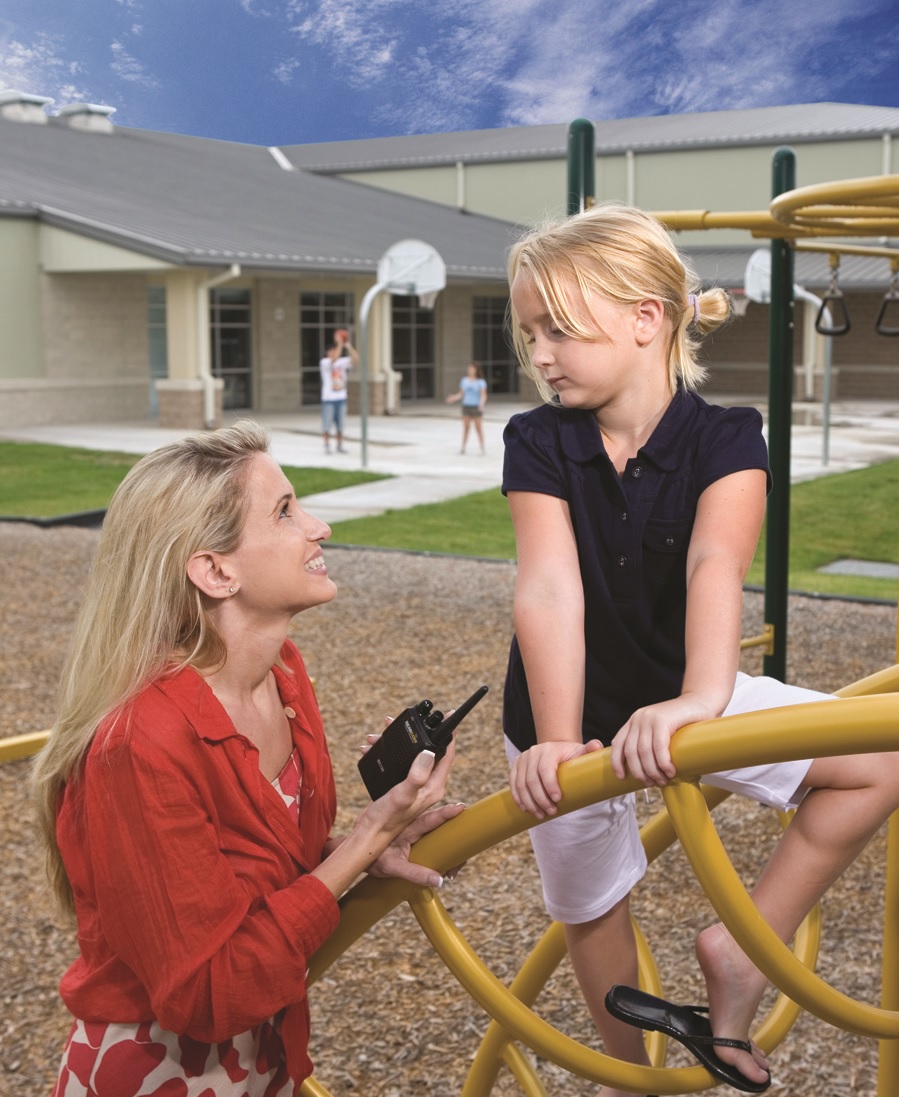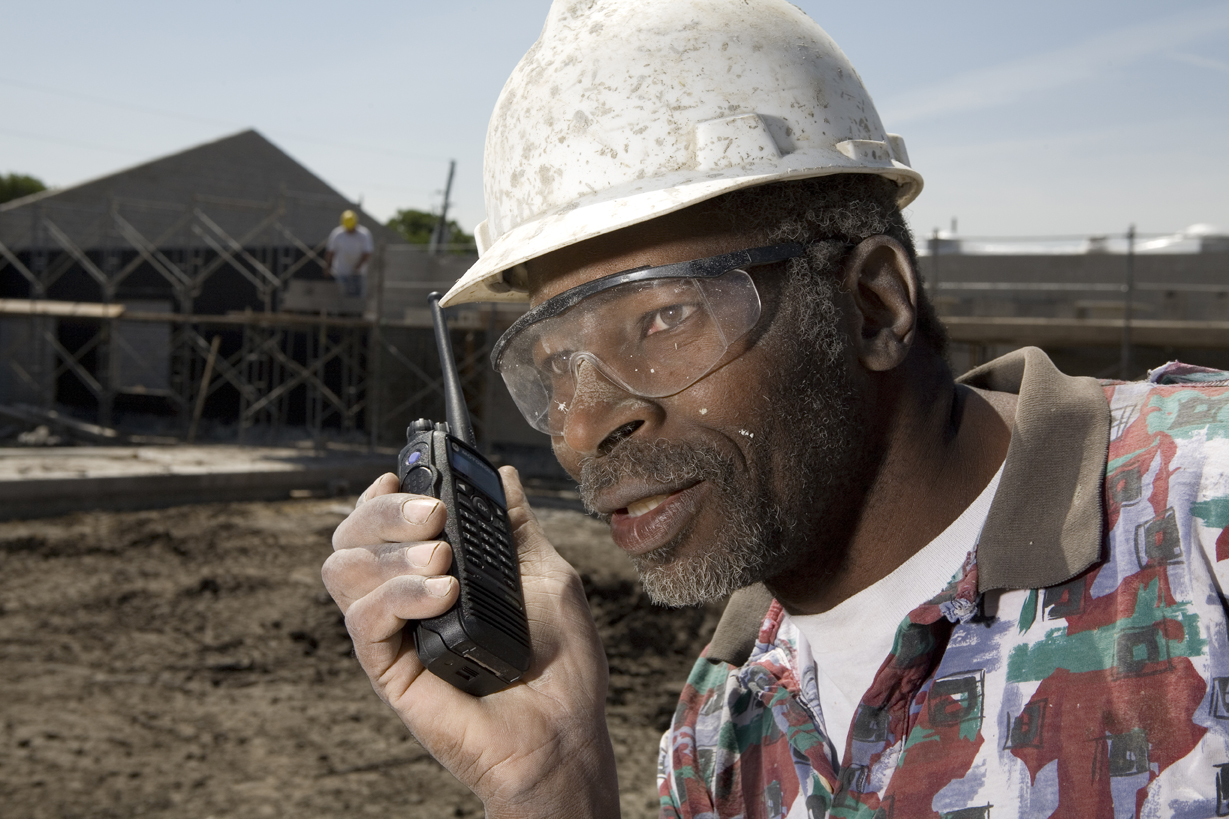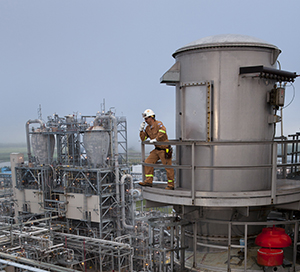There’s a two-way radio for just about every business or industry setting. For instance, the radios that firefighters carry into a burning building will be a lot different than the radios hostesses use to seat you at a restaurant.
You need to match the two-way radio you buy to the environment it will be used in. Otherwise, you’ll either pay for stuff you don’t really need, or perhaps you’ll neglect features that can save lives or prevent a disaster.
For starters, you want radios built for commercial, industrial or public service operations. Consumer-grade walkie-talkies are barely more than toys, with low power, limited frequencies, crowded channels and easily-breakable design. Dedicated professional radios are built to be used every day in rugged environments to suit the needs of specific sectors. They require FCC licenses, which means you’ll have frequencies dedicated to your business.
Professional radios also come in a wide range of designs and feature sets that depend primarily on the environment where they will be used.
Here’s a look at several common differentiators and options:
Heavy or Light Usage The first consideration is how intensely a two-way radio will be used. A construction worker needs a more durable radio than a hotel manager. A shipping dispatcher needs a radio with a long battery life, whereas a teacher monitoring recess may only use her radio occasionally.
What constitutes heavy or light duty is somewhat subjective, so it may be a good idea to discuss with your BearCom representative to make sure you choose the right radio(s) for your needs.
Indoors/Outdoors
Most indoor environments are dry and temperature-controlled, so radios typically don’t need protection against moisture or extremes of heat or cold. Of course, some indoor environments may have hazards that require specific radio safety features or protection against moisture and particulates.
The first consideration is how intensely a two-way radio will be used. A construction worker needs a more durable radio than a hotel manager. A shipping dispatcher needs a radio with a long battery life, whereas a teacher monitoring recess may only use her radio occasionally.
What constitutes heavy or light duty is somewhat subjective, so it may be a good idea to discuss with your BearCom representative to make sure you choose the right radio(s) for your needs.
Indoors/Outdoors
Most indoor environments are dry and temperature-controlled, so radios typically don’t need protection against moisture or extremes of heat or cold. Of course, some indoor environments may have hazards that require specific radio safety features or protection against moisture and particulates.  In outdoor settings, radios typically require greater sealing against water and dust. People working in marine settings, mining and construction are examples where radios need added environmental protection.
Ask your BearCom rep about IP (ingress protection) ratings that help define precisely how well a radio is protected from the elements.
Highly Hazardous Operations
The best industrial two-way radios come brimming with safety features. These are the most common:
In outdoor settings, radios typically require greater sealing against water and dust. People working in marine settings, mining and construction are examples where radios need added environmental protection.
Ask your BearCom rep about IP (ingress protection) ratings that help define precisely how well a radio is protected from the elements.
Highly Hazardous Operations
The best industrial two-way radios come brimming with safety features. These are the most common: 
 produce deafening background noise.
While traditional analog radios tend to pick up a lot ambient noise, many people have upgraded to digital radios, which are encoded to translate the sound of the human voice while filtering out mostly everything else. This allows digital radios to provide far more clear communications than their analog predecessors.
In addition, noise suppression headsets are another effective way to maintain communications in high-decibel environments.
There are several other environmental factors that can affect two-way radio performance and impact the equipment you select. BearCom has the industry expertise required to recommend and provide two-way radios for nearly any use. Call on us to help you find the solution you need to be successful. Contact BearCom at: 800.527.1670.
produce deafening background noise.
While traditional analog radios tend to pick up a lot ambient noise, many people have upgraded to digital radios, which are encoded to translate the sound of the human voice while filtering out mostly everything else. This allows digital radios to provide far more clear communications than their analog predecessors.
In addition, noise suppression headsets are another effective way to maintain communications in high-decibel environments.
There are several other environmental factors that can affect two-way radio performance and impact the equipment you select. BearCom has the industry expertise required to recommend and provide two-way radios for nearly any use. Call on us to help you find the solution you need to be successful. Contact BearCom at: 800.527.1670.
 MOTOROLA, MOTOROLA SOLUTIONS and the Stylized M Logo are trademarks or registered trademarks of Motorola Trademark Holdings, LLC and are used under license. All other trademarks are the property of their respective owners. ©2016 Motorola Solutions, Inc. All rights reserved.
MOTOROLA, MOTOROLA SOLUTIONS and the Stylized M Logo are trademarks or registered trademarks of Motorola Trademark Holdings, LLC and are used under license. All other trademarks are the property of their respective owners. ©2016 Motorola Solutions, Inc. All rights reserved.
 The first consideration is how intensely a two-way radio will be used. A construction worker needs a more durable radio than a hotel manager. A shipping dispatcher needs a radio with a long battery life, whereas a teacher monitoring recess may only use her radio occasionally.
What constitutes heavy or light duty is somewhat subjective, so it may be a good idea to discuss with your BearCom representative to make sure you choose the right radio(s) for your needs.
Indoors/Outdoors
Most indoor environments are dry and temperature-controlled, so radios typically don’t need protection against moisture or extremes of heat or cold. Of course, some indoor environments may have hazards that require specific radio safety features or protection against moisture and particulates.
The first consideration is how intensely a two-way radio will be used. A construction worker needs a more durable radio than a hotel manager. A shipping dispatcher needs a radio with a long battery life, whereas a teacher monitoring recess may only use her radio occasionally.
What constitutes heavy or light duty is somewhat subjective, so it may be a good idea to discuss with your BearCom representative to make sure you choose the right radio(s) for your needs.
Indoors/Outdoors
Most indoor environments are dry and temperature-controlled, so radios typically don’t need protection against moisture or extremes of heat or cold. Of course, some indoor environments may have hazards that require specific radio safety features or protection against moisture and particulates.  In outdoor settings, radios typically require greater sealing against water and dust. People working in marine settings, mining and construction are examples where radios need added environmental protection.
Ask your BearCom rep about IP (ingress protection) ratings that help define precisely how well a radio is protected from the elements.
Highly Hazardous Operations
The best industrial two-way radios come brimming with safety features. These are the most common:
In outdoor settings, radios typically require greater sealing against water and dust. People working in marine settings, mining and construction are examples where radios need added environmental protection.
Ask your BearCom rep about IP (ingress protection) ratings that help define precisely how well a radio is protected from the elements.
Highly Hazardous Operations
The best industrial two-way radios come brimming with safety features. These are the most common: 
- Intrinsically Safe (IS). Designed for hazardous locations where fire or explosion hazards may exist due to flammable gases or vapors, flammable liquids, combustible dust or ignitable fibers or flyings. IS radios are sealed to prevent sparks that could set off an explosion.
- Man-Down Alert. This feature sends an alert when a radio remains tilted beyond a certain setting for a specified length of time. It’s a beneficial feature for workers in remote locations.
- Emergency Alerts. Some radios have a “panic button” the user can push to summon help quickly.
- Impact Resistance. Construction sites and factories often require a radio that can withstand getting dropped and kicked around repeatedly.
 produce deafening background noise.
While traditional analog radios tend to pick up a lot ambient noise, many people have upgraded to digital radios, which are encoded to translate the sound of the human voice while filtering out mostly everything else. This allows digital radios to provide far more clear communications than their analog predecessors.
In addition, noise suppression headsets are another effective way to maintain communications in high-decibel environments.
There are several other environmental factors that can affect two-way radio performance and impact the equipment you select. BearCom has the industry expertise required to recommend and provide two-way radios for nearly any use. Call on us to help you find the solution you need to be successful. Contact BearCom at: 800.527.1670.
produce deafening background noise.
While traditional analog radios tend to pick up a lot ambient noise, many people have upgraded to digital radios, which are encoded to translate the sound of the human voice while filtering out mostly everything else. This allows digital radios to provide far more clear communications than their analog predecessors.
In addition, noise suppression headsets are another effective way to maintain communications in high-decibel environments.
There are several other environmental factors that can affect two-way radio performance and impact the equipment you select. BearCom has the industry expertise required to recommend and provide two-way radios for nearly any use. Call on us to help you find the solution you need to be successful. Contact BearCom at: 800.527.1670.
About BearCom
BearCom provides a broad line of high-performance wireless communications products, services, and complete mobility solutions. Founded in 1981, BearCom is America’s only nationwide dealer and integrator of wireless communications equipment, serves customers from 30 branch offices located throughout the U.S., and employs approximately 360 people. BearCom is headquartered in the Dallas, Texas area. MOTOROLA, MOTOROLA SOLUTIONS and the Stylized M Logo are trademarks or registered trademarks of Motorola Trademark Holdings, LLC and are used under license. All other trademarks are the property of their respective owners. ©2016 Motorola Solutions, Inc. All rights reserved.
MOTOROLA, MOTOROLA SOLUTIONS and the Stylized M Logo are trademarks or registered trademarks of Motorola Trademark Holdings, LLC and are used under license. All other trademarks are the property of their respective owners. ©2016 Motorola Solutions, Inc. All rights reserved.



